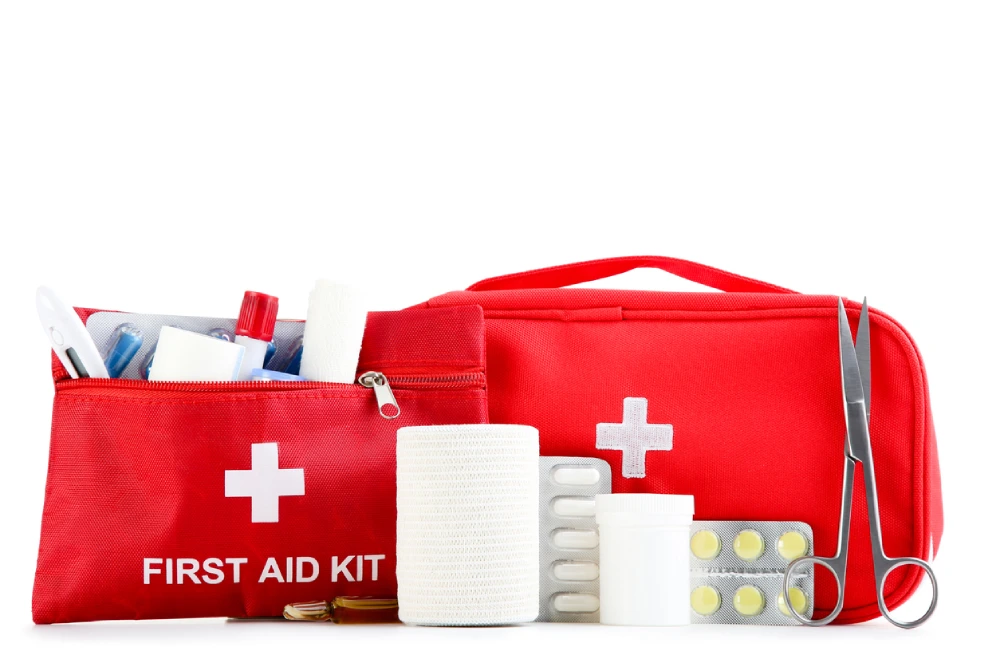We never know when an accident will happen. One moment you’re slicing veggies for dinner, and the next, you’re frantically searching for a bandage. Or maybe you’re enjoying a hike and suddenly need to remove a tick.
Emergencies don’t come with a warning. That’s why having a properly stocked first aid kit in your home, car, and backpack is crucial.
In this comprehensive guide, we’ll walk you through everything you need to build the ultimate first aid kit, how to maintain it, and how we at PharmaChoice can help you keep your family safe and prepared.
Why Every Canadian Home Needs a First Aid Kit
Did you know that, according to Parachute, Canada’s national charity dedicated to injury prevention, 634 Canadians are hospitalized every day because of injuries?
Emergencies can strike at any time. Whether it’s a scraped knee, a bee sting, or a more serious incident, having the right tools on hand can make all the difference in reducing harm and preventing complications.
In Canada, where weather conditions, wildlife encounters, and long distances to medical facilities are common, it’s essential to be prepared for the unexpected, both at home and out on the roads and trails.
A first aid kit is your frontline defence in promoting safety and health. It helps address:
- Minor injuries like cuts, scrapes, and burns
- Allergic reactions to food, bug bites, or environmental elements
- Sudden illness, such as fever or headaches
- Emergencies like overdoses or accidents, where every second counts
Depending on where you live or travel, your kit might include specialized items, like tick removal tools in wooded or rural areas.
Being equipped to manage these situations can give you peace of mind and prevent a small issue from turning into a larger health problem.
So, what does a well-stocked first aid kit look like?
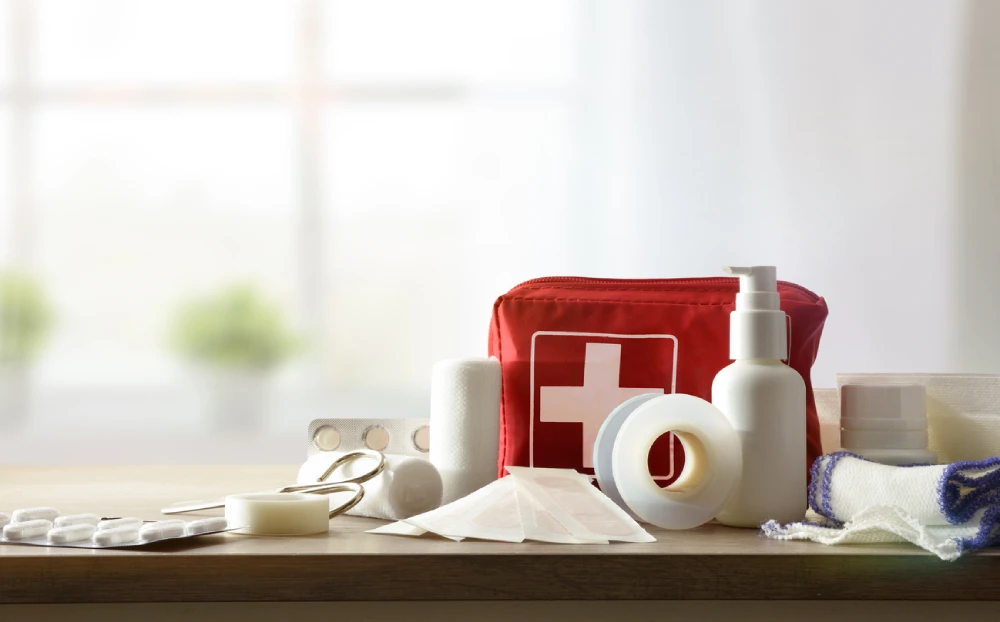
Core Components of a Standard First Aid Kit
Building a basic first aid kit starts with core essentials, categorized into four main areas: wound care, tools and instruments, medications, and additional supplies.
Let’s explore what items should be included under each of these categories.
Wound Care
- Assorted adhesive bandages – Keep various sizes for blisters, cuts, and scrapes.
- Sterile gauze pads and adhesive tape – For covering larger wounds.
- Antiseptic wipes – Crucial for cleaning cuts and preventing infection.
- Antibiotic ointment – To reduce the risk of infection and promote healing.
Tools and Instruments
- Scissors, tweezers, and safety pins – For cutting gauze, removing splinters, or pinning bandages.
- Triangular bandage – Useful for making a sling or supporting a limb.
- Instant ice packs and heat packs – To manage swelling, bruises, or muscle pain.
- Digital thermometer – For checking body temperature.
- Disposable gloves and CPR face shield – Protects both the helper and the injured.
- Tick removal kit – Especially important for outdoor use in areas prone to ticks.
Medications and Treatments
- Pain Relief Medication – To manage discomfort, pain, or fever. This may include things like acetaminophen, ibuprofen, or even pain relief creams.
- Antihistamines – To combat allergic reactions. This may include things like Diphenhydramine hydrochloride to treat allergic reactions to bug bites and Desloratadine to combat seasonal or environmental allergies.
- Hydrocortisone cream – To reduce inflammation and itching from skin irritations.
- Take Home Naloxone Kit – A life-saving option amid Canada’s opioid crisis. These kits are available at many PharmaChoice pharmacy locations. Naloxone can temporarily reverse the effects of an opioid overdose until emergency services arrive, making it an essential addition for anyone who may be at risk of overdose or is likely to witness one.
Additional Supplies
- Emergency blanket – Helps retain body heat.
- First aid manual or instruction booklet – Essential for guidance in emergency situations.
- Emergency telephone numbers – Including your family doctor, nearest hospital, and local poison control center.
- Flashlight with extra batteries – For low-light emergencies.
With so many items, cost may be a concern, but there are many ways to build a quality kit without breaking the bank.
Many of the products needed for a first aid kit are included in our Option+ lineup, helping provide an affordable way to restock or complete your first aid kit with high-quality products at affordable prices.
From tick kits, wound care staples, crucial tools, and medication and treatment products, Option+ has everything you need to create a robust first aid kit without breaking the bank.
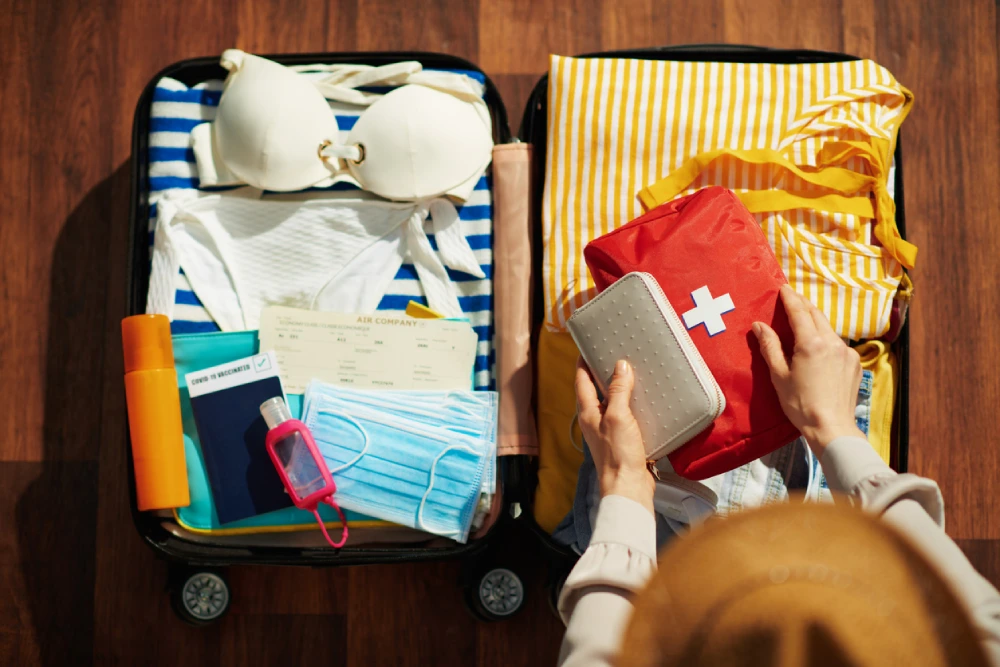
Specialized First Aid Kits for Different Settings
Your first aid needs can vary depending on your environment. What works for home emergencies may not be sufficient for travel or outdoor adventures.
Having a kit for different environments is a must. Here are some things to consider as you work through your first aid planning.
Home First Aid Kits
Home first aid kits should include nearly everything listed above, and should not be forgone.
In fact, you may be surprised to find out that a first aid kit may be a requirement set forth by your city.
Some municipalities may require homes to have first aid kits on hand, particularly those with swimming pools.
A home kit should be well-stocked with medications, bandages, thermometers, and tools for minor emergencies.
Vehicle First Aid Kits
A compact but comprehensive vehicle kit should include the items listed above as well as:
- A seatbelt cutter
- A window breaker
- Extra blankets
- Emergency flares
- Maps
- Bottled water and non-perishable food
- Booster cables
Roadside emergencies, travel sickness, or minor injuries are easier to manage when you’re ready for the unexpected.
Workplace First Aid Kits
Employers in Canada are legally required to meet workplace safety standards.
Workplace kits should follow provincial regulations and be stocked with burn dressings, eyewash, gloves, and wound care materials.
Outdoor and Travel First Aid Kits
Whether you’re hiking, camping, or travelling abroad, you should always include a travel first aid kit in your packing. Add items like:
- Water purification tablets
- Insect repellent
- Sunscreen
- Extra antihistamines
- Blister pads
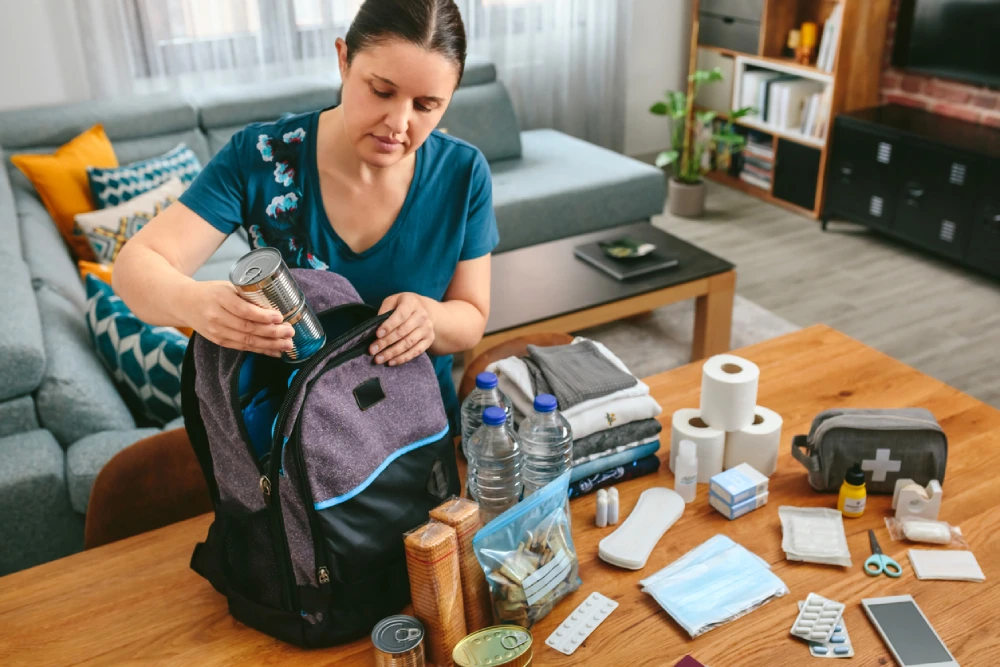
Seasonal Adjustments to Your First Aid Kit – Winter vs. Summer Essentials
Canada’s changing seasons bring unique health and safety challenges. Your first aid kit should reflect the climate and common conditions you’re likely to face.
Preparing for both winter and summer hazards ensures your family stays protected all year long.
Winter Essentials
In colder months, injuries and emergencies can be related to hypothermia, dry skin, or travel conditions. Be sure to include:
- Hand warmers to prevent frostbite in cold environments
- Lip balm to protect against dry, cracked lips from the cold air
- Extra emergency blankets in case of car breakdowns or outdoor exposure
- Cold medications, such as decongestants and cough drops, to help manage common winter illnesses
- Ice melt or salt to reduce slip hazards and help with mobility in icy conditions
Summer Essentials
Hot weather brings its own risks, from sunburns to dehydration. For your summer kit, consider stocking the following items:
- Broad-spectrum sunscreen to prevent UV-related skin damage
- Aloe vera to soothe sunburns
- Tick removal kit, especially if you’re headed into wooded or grassy areas
- Insect repellent to protect against mosquito and bug bites. Include an insect repellent that has DEET to combat ticks
- Hydration salts or electrolyte powder to help replenish fluids lost from heat or physical activity
Storage and Maintenance of Your First Aid Kit
Having a complete first aid kit is only the first step; knowing where to store it and how to maintain it is equally important.
A well-preserved kit ensures that every item is effective and ready to use when you need it most. Here’s how to keep your supplies in top shape.
Proper Storage Practices for First Aid Kits
Where you keep your first aid kit can impact how well it performs in an emergency. To ensure everything stays intact and accessible:
- Store the kit in a cool, dry place away from heat, humidity, and direct sunlight, which can degrade certain medications and adhesives.
- Ensure the kit is easy to reach during an emergency but out of reach of young children unless it’s being used as a teaching tool.
- Make sure it’s clearly labelled and known to all household members or coworkers, depending on the setting.
- Consider placing kits in multiple areas: one at home, one in the car, and another at the cottage.
Regular First Aid Kit Maintenance
Your first aid kit will require some ongoing attention, even if you haven’t used it. Check it every six months to ensure it remains up to date and fully stocked. Consider things like:
- Looking for expired medications or ointments and disposing of them safely.
- Replacing any used or missing items like bandages, gloves, or ice packs.
- Testing battery-powered devices like thermometers or flashlights and replacing dead batteries as needed.
- Updating emergency contact information and manuals if they’ve changed.
The Role of Pharmacists in First Aid & Injury Prevention
PharmaChoice pharmacists aren’t just medication experts; we’re your partners in health and safety. We’re here to:
- Help you choose the right first aid kit items
- Explain how medications may interact
- Offer advice on Naloxone use and access
- Provide local emergency contact resources
Your pharmacist can even help you build a customized kit based on your family’s unique needs or travel plans.
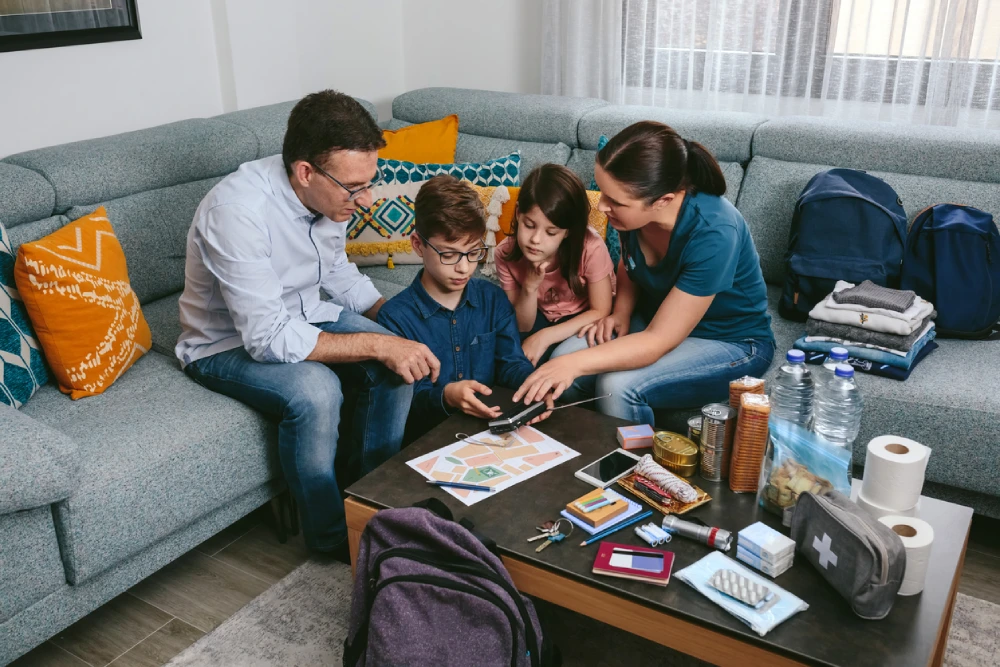
Building a Culture of Safety and Preparedness
Creating a truly safe environment involves more than just having a well-stocked first aid kit; it’s about making safety a shared priority in your household and community.
When everyone knows what to do in an emergency, responses become faster, calmer, and more effective.
Educating Family Members
Children, teens, and adults should all feel confident in taking basic safety actions. To help them prepare:
- Teach children how to call 911 and apply basic bandages
- Make first aid part of your regular home safety discussions
- Encourage teens and adults to take basic first aid courses
These small efforts go a long way in building confidence and capability across all age groups.
Community Involvement
A culture of safety extends beyond the walls of your home. Being involved in community preparedness helps ensure everyone is looking out for one another.
Consider coordinating emergency planning with neighbours, joining local safety initiatives, or hosting a first aid awareness event with your community association.
Make Safety Accessible – Complete Your First Aid Kits Today
A well-stocked first aid kit gives you control in situations where every second counts.
If you already have a kit, now’s a great time to update it. And if you’re just starting out, don’t worry, we’re here to help every step of the way.
Talk to your local PharmaChoice pharmacist today to help customize the perfect first aid kit for your home, car, or next adventure—because your family’s safety is always worth the preparation.

